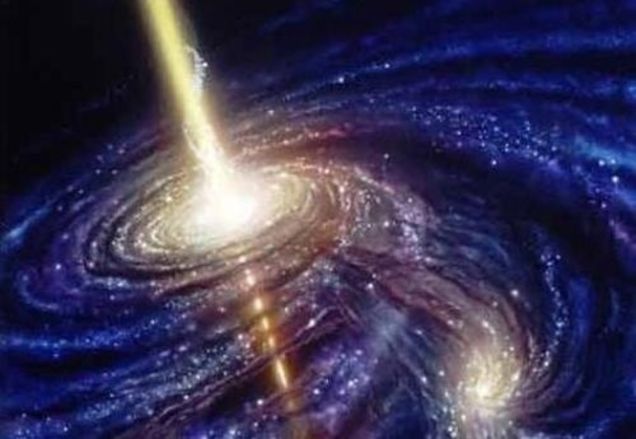White holes are basically black holes in reverse: They eject all the matter sucked into a black hole. We’ve never observed one, and most astrophysicists suspect they don’t exist – all because they’re not the exact opposite of black holes.
White holes are, on a theoretical level, simply a recognition of the fact that, if time flows in one direction, physics says it can just as easily flow in the other direction. What does that mean? Well, a black hole doesn’t just describe an object in space – it also describes a progression in time towards a singularity in the future. If a black hole has a singularity in its future, then physics says there should also be an object with a singularity in its past, and that’s a white hole.
The problem is that we’ve never observed one, and the current scientific consensus is that we probably never will. As such, white holes have generally been ignored in even the theoretical literature because, well, what’s the point? But now, University of Oregon physicist Stephen Hsu has explored the theoretical side of the problem, and he’s pretty sure he knows why we don’t see white holes in our universe. It’s all a question of breaking the symmetry between black and white holes.
When Stephen Hawking introduced the idea of white holes in 1970s, he noted that under certain circumstances, white holes and black holes should behavior in an identical manner and be essentially indistinguishable. As long as either hole was in thermal equilibrium with its cosmic surroundings, each would absorb and emit energy in equal amounts and, as such, behave in pretty much the exact same way. That preserved the time symmetry between the two objects, but it didn’t seem to resolve the question of why we don’t see white holes, and so the question was set aside.
Dr. Hsu picks up the issue by considering white holes in another context. He imagines a white hole all alone in the universe, cast out in a completely empty vacuum. We already know what would happen to a black hole in such a scenario – it would slowly emit Hawking radiation. This is basically where the positive half of a particle-antiparticle pair that forms near a black hole manages to escape its pull while the negative half falls in, causing the black hole to slowly lose mass. Over time, the black hole would evaporate.
This process of black hole evaporation has what Hsu describes as “a statistical arrow of time”, which basically means the process can’t be reversed to describe a white hole. The trick is that the black hole only emits radiation in a total vacuum, while the white hole only absorbs radiation – and what, exactly, is it going to absorb in completely empty space? That leaves the white hole no choice but to explode in a burst of what Hsu calls “quasithermal radiation.”
The upshot of all this is that white holes may be fundamentally unstable entities, too dependent on the ready availability of radiation nearby for it to absorb. While it’s possible to imagine an eternal black hole, Hsu’s paper appears to preclude the construction of an eternal white hole, and the maximum life span of a white hole might be a lot, lot less than eternity. So it turns out there’s a very good reason we’ve never seen a white hole – in this universe, anyway.
Source: Gizmodo

































Leave a Comment
You must be logged in to post a comment.